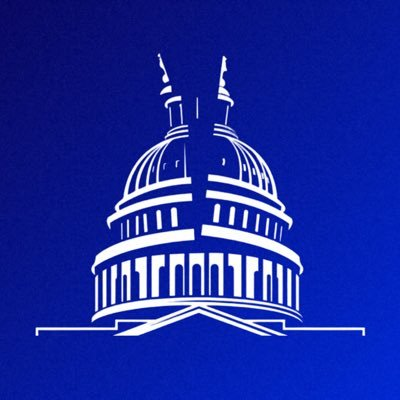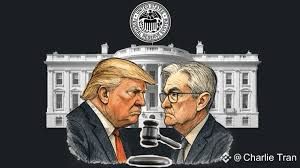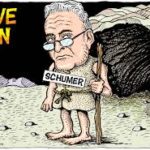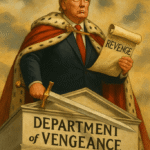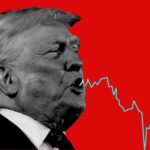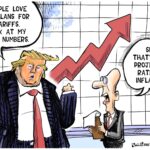Trump’s pressure on the Federal Reserve to cut interest rates to stoke a short term economic and market bump leading into the primaries, seems to be working. The Fed’s expected to pull the trigger today (Sept. 17). And inflation is sure to follow. It always has when leaders exercise control over their central banks.
Worse, Trump’s obedient Republicans confirmed a sitting White House advisor, Stephan Miran, as a new member of the Fed’s board. Shockingly, Miran will continue advising Trump while serving on the Fed. And if Trump’s compliant Supreme Court majority allows him to replace Lisa Cook, his appointees will hold a majority on the Fed. Then Trump won’t need to pressure anyone – he’ll make interest rate decisions himself.
Let’s see what happened when leaders took control of their central banks to lower rates.
President Richard Nixon pressured Fed Chair Arthur Burns to keep interest rates low going into the 1972 presidential election. The Fed succumbed, the economy had a spurt, and Nixon got reelected. Predictably, four years after his presidency, inflation rates hit 15%, and the dollar lost 12 percent of its value.
It took painful interest-rate increases under new Fed Chair Paul Volker to get it under control. In 1980, Volker raised rates to a record high of 20 percent. Inflation still shot up to 11.6 percent in March. High mortgage and car loan rates made homes and cars unaffordable, curtailed consumer spending and sent the economy into a severe recession.
Argentina’s Consumer Price Index started surging in 1946 after President Juan Peron nationalized the central bank and had the banks expand the money supply and lower rates in order to accommodate aggressive public spending. The annual inflation rate reached 18.74%. By the end of 1951, the CPI surged to 50.21%. The accumulated inflation rate in just six years reached 297.57%. Clearly, the main cause of Argentina’s hyperinflation was its central bank’s enabling of political profligacy.
In January 2007, Argentina’s President Christina Kirchner, in a striking similarity to Trump, didn’t like her experts’ consumer price index numbers. So she fired them, replaced them with political appointees and threated prosecution against independent economists who published higher CPI estimates.
Turkey’s another example. Its inflation rates have been in double digits since Trump’s authoritarian idol, President Erdogan, appointed a central bank head to lower rates. Although the bank eventually raised rates, annual price gains were still around 40% as of January 2025.
These are examples of politicians seizing control over central banks for their own political gain while their countries bear the pain of higher inflation. U.S. Treasury Secretary Janet Yellen, referring to raising rates to recover from high inflation, told a House subcommittee. “No one wants to see that happen again.” So, an independent is Fed is imperative, lest we suffer the pain of hyperinflation and the interests rates required to tame it.
